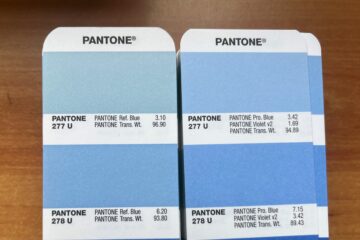The Dieline | by Rudy Sanchez on 10/18/2023
If you’re me, when you’re eating cereal, you’re reading the different panels of the box instead of scrolling through social media. The side with the nutritional information and ingredients is always a bit depressing, especially when you stare in awe at the sugar content of some brands.
That said, the back panel is king.
That’s where the mazes, puzzles, and other fun stuff reside. Before mobile devices, the back of the cereal box was where one could find some solid entertainment, especially in the morning while having breakfast. These puzzles prime the mental pump, similar to how those Sugar Smacks get the body’s engine humming.
Careful observers, however, will also notice strange symbols and graphics, usually along the edges of the packaging. Usually, these markings are blocks or circles of the same colors with different intensity levels, a bullseye-like glyph, or lines meeting at corners.
If you don’t happen to design things meant for printing, those cryptic symbols are called printer’s marks. They aren’t part of a giant conspiracy by the global elites using Cornflakes to subliminally program your mind into believing the planet is flat. Instead, they act as quality control and cutting marks that designers place in their files for printers so that the final product is accurately reproduced and trimmed.
Some marks include bleed marks, which tell the print how much beyond the crop mark the artwork goes. Files typically leave a tiny amount of bleed so that even a minuscule error in cutting doesn’t result in white edges. Bleed marks are usually skinny lines.
Crop marks, or trim marks, are related and are typically hairline rules like bleed marks but indicate where to cut the final printed product.
Color bars or circles get added to the file representing CMYK (Cyan, Magenta, Yellow, and Key) in various grey-tone increments for color accuracy. A registration mark also gets used for color accuracy and alignment—frequently, it’s a crosshair graphic that makes it easy for printers to spot misalignment.
Other rarely seen markings might include additional information, such as the file name, version number, or software used. An area outside the main, bleed, and trim sections is called a slug area.
Ideally, marks like color bars, registration marks, bleed, and trim marks were hidden or removed when a piece of packaging gets printed. But sometimes, it’s not possible or practical, leaving these printing aides naked to the consumers’ eyes.
At least now, you know what those symbols on packaging are, what they’re used for, and that they’re called printer’s marks. You may resume your Lucky Charms word jumble now.

